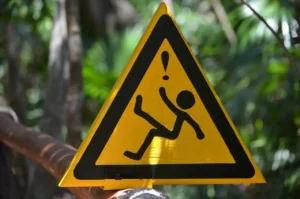5 Deadly Mistakes to Avoid in Your Resume!
A resume should open doors, not slam them shut! Here are 5 career-killing mistakes I’ve seen in resumes. Avoid them if you don’t want to be tossed into the trash bin!
Ah, the resume… That little piece of paper that’s supposed to make you shine, but sometimes it feels more like a puzzle than an effective application. After seeing countless resumes, I’ve come across all kinds: designs that look like abstract art, descriptions as vague as horoscopes, and applications sent out at random with the “you miss 100% of the shots you don’t take” mentality. Result? These resumes end up in the trash faster than spam emails. Here are the most common mistakes to avoid if you want to land that interview!

1. Applying Everywhere Just to Apply
There are candidates who methodically target their job search with care… and then there are those who send out their resumes like they’re playing the lottery, hoping by some miracle it works out. Spoiler alert: it won’t. And this happens both in cold applications and in response to job ads.
The result? Lunar applications! Like, for example, you sending your resume as a…
- Butcher applying to a tech startup
- Plumber convinced they belong in a pharmaceutical lab
- History teacher applying to work in a nuclear plant…
Admit it, it stings a little! And the worst part? This really happens.
Instead, do this:
Make sure the company is ACTUALLY hiring someone with your skills. Otherwise, it’s like trying to open a locked door with a banana – it’s not going to happen.
2. The Resume as a Cryptic Work of Art
Ah, Canva… That wonderful tool that turns a resume into a psychedelic festival poster.
It’s pretty, it’s trendy, but if the recruiter has to spend more than 10 seconds trying to figure out where your experience and skills are buried under a pile of colorful icons and charts, you’ve failed. Special shout-out to those skill bars like “Excel level: 3/5” (but no one knows if that means “I’m a pivot table pro” or “I can color in cells”).
Instead, do this:
- Prioritize readability: Your resume should be structured, not an escape room.
- Place the essential information at the top left (that’s where the eyes land first).
- Avoid unnecessary fluff (those “motivated” trophy icons? We should already know that).
3. Listing Education at the Top Even After 3+ Years of Experience
When you’re fresh out of school at 20, it makes sense to highlight your degrees. But once you have some work experience, what matters is what you can DO, not just what you studied.
However, some candidates keep their “Education” section at the top of the resume, pushing their professional experience further down like it’s an afterthought. Fatal mistake: it’s not visible, and you’ve lost the recruiter’s interest.
Instead, do this:
Once you have a year of experience, lead with your professional history.
Education is important, but it should come after what you’ve accomplished in the field.
4. The Catch-All Resume
I get it, you’ve worked hard, and you want to show you haven’t been sitting around. But listing every single job you’ve ever had is like trying to fit all your clothes into one suitcase: it overflows and becomes unreadable.
The problem?
- A part-time job or volunteer experience doesn’t hold the same weight as real professional experience, even if you’ve learned a lot from it.
- A server applying for a finance job doesn’t need to detail their years of working in the kitchen (even though handling stress on a Friday night might be a useful skill).
Instead, do this:
- Separate relevant experiences (those related to the job you’re applying for) from the “survival jobs.”
- If a side job demonstrates skills like leadership, stress management, or organization, keep it in a section called “Other Experiences” lower down.
5. The All-Over-the-Place Career Path
Not everyone has a linear career path, and that’s okay… as long as you don’t present your resume as a chaotic mess of unrelated experiences.
Example of a bad resume: someone applying for a role in accounting but who has bounced between home care, bakery sales, and admin work. Result? A recruiter furrows their brow, and your resume goes straight to the rejection pile.
Instead, do this:
- Reorganize by relevance: Put experiences related to the job you’re applying for at the top.
- Group unrelated roles under a section called “Transferable Skills.”
- If a job was too short or irrelevant, cut it without guilt.
What Truly Matters on Your Resume
Your resume is not an autobiography. It’s an advertisement. It needs to answer one simple question: Why am I the perfect person for this job? If the recruiter has to guess, you’ve lost.
To succeed, put yourself in the shoes of the person reading your resume. If you feel they might lose interest before understanding who you are, it’s time to declutter. Avoid common resume mistakes that can leave your qualifications unclear.
In fact, a well-crafted resume is like a great punchline: clear, impactful, and impossible to ignore. If your message gets lost in the noise, you’re missing the point. So simplify, structure, and highlight what truly matters… and give the recruiter a compelling reason to call you.
Ready to avoid resume mistakes and turn your resume into a powerful weapon? Check out my special guide for practical tips and tricks to capture the recruiter’s attention within the first few seconds!




